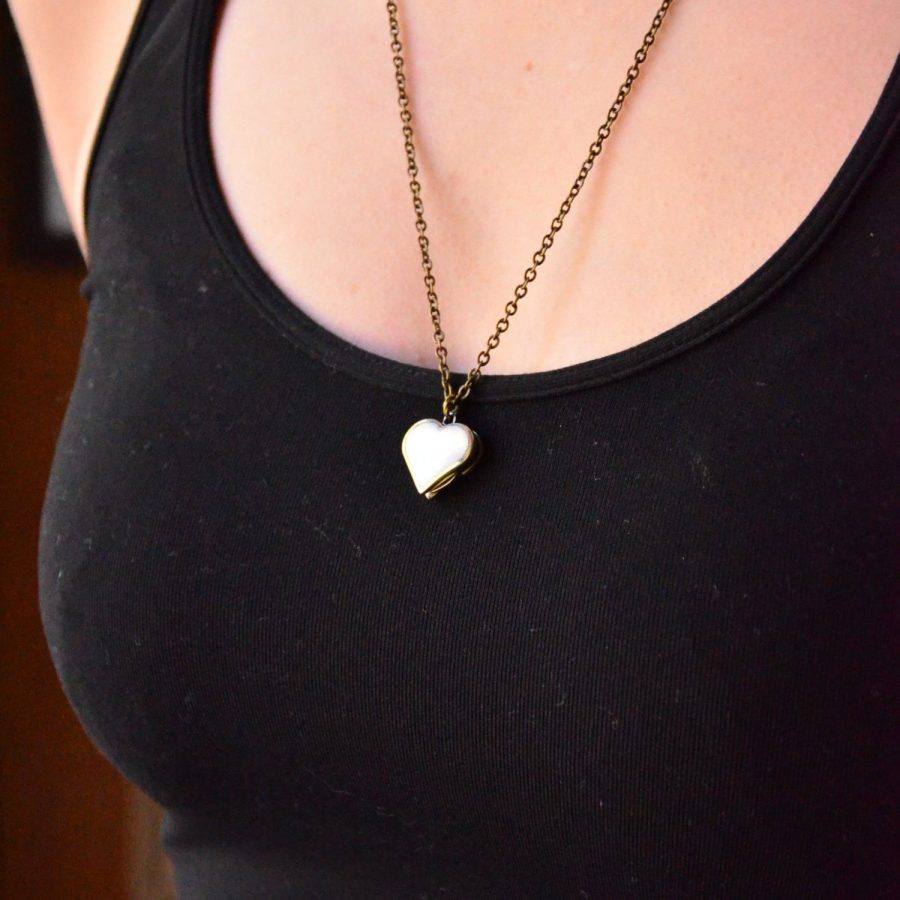Introduction
In the ever-evolving landscape of fashion, trends often emerge, fade, and resurface with a fresh interpretation. One such trend that has recently pierced through conventional norms is the knife pendant necklace – an accessory that seamlessly blends edginess with elegance. This unlikely fusion of style and symbolism has captivated the imagination of both haute couture designers and streetwear enthusiasts alike, marking its place as a prominent statement piece in contemporary fashion.
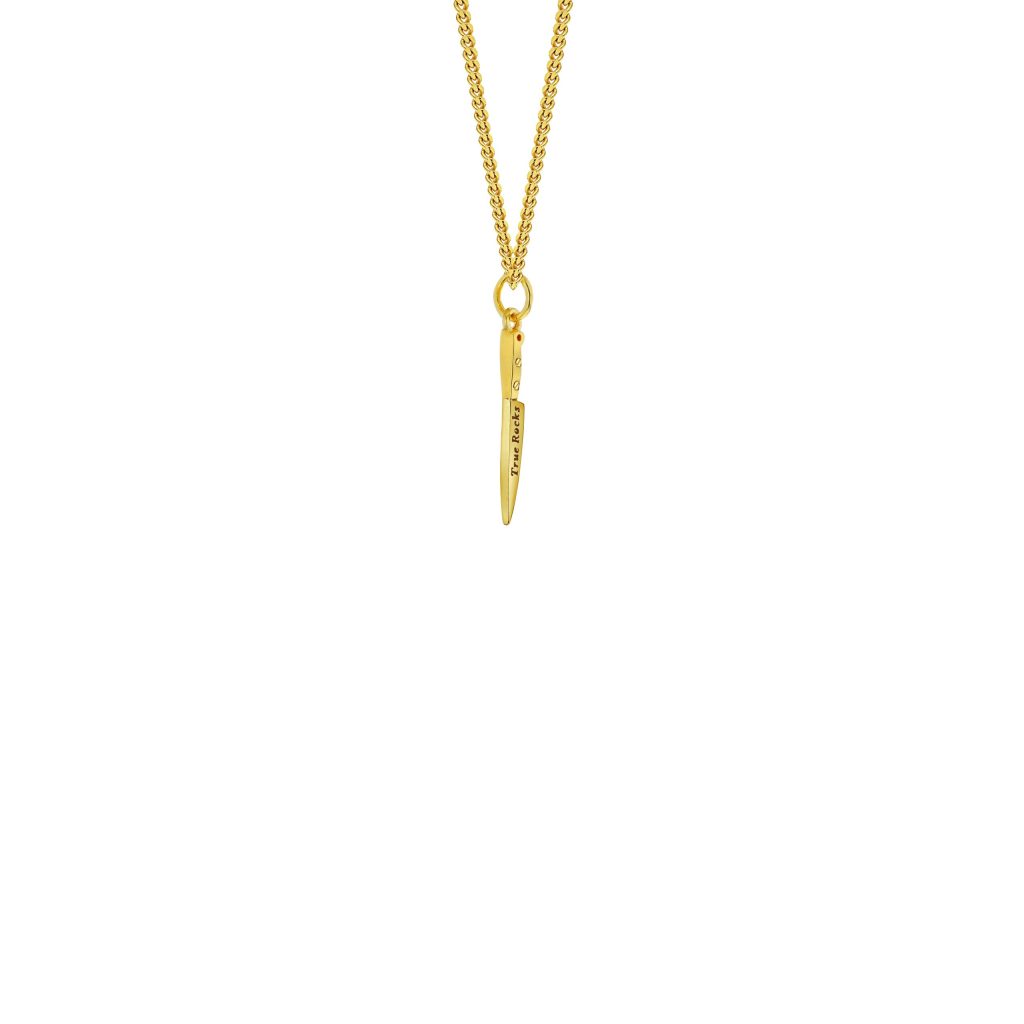
Origins and Evolution
The knife, historically a tool and weapon, has been repurposed into an ornamental accessory, reflecting humanity’s fascination with the dual nature of objects. Early instances of weapon-inspired jewelry can be traced back to ancient civilizations, where they symbolized power, protection, or social status. However, it wasn’t until recent years that knife pendants have taken on a more nuanced, fashionable role.
The modern resurgence of knife pendant necklaces can be attributed to various cultural influences. From punk and goth subcultures that embraced dark aesthetics to high-end fashion runways showcasing avant-garde interpretations, these pieces have transcended their functional origins to become symbols of personal expression and individuality.
Symbolism and Significance
At its core, the knife pendant necklace represents duality – beauty and danger, fragility and strength. It serves as a reminder of the delicate balance between opposing forces within us all. For some wearers, it embodies empowerment and self-defense, while for others, it may symbolize cutting away negative energies or severing ties with the past.
Moreover, knife pendants have also become a gender-neutral accessory, challenging traditional notions of masculinity and femininity in fashion. This versatility adds another layer to their appeal, making them a unifying element across diverse styles and identities.
Fashion Runway Influence
Fashion designers have played a pivotal role in popularizing knife pendant necklaces. Brands like Alexander McQueen, Givenchy, and Vivienne Westwood, known for their provocative and daring designs, have incorporated knife motifs into their collections, elevating them to haute couture status. These runway presentations often spark trends that trickle down into mainstream fashion, inspiring high-street brands and independent jewelers to create their own interpretations.
Street Style and Pop Culture
Beyond the runway, knife pendant necklaces have found a niche among fashion influencers and celebrities, further fueling their popularity. Spotted on the likes of Rihanna, Harry Styles, and Billie Eilish, these accessories have become a staple in street style, blending effortlessly with both casual and formal attire. Social media platforms like Instagram and TikTok have also accelerated their visibility, turning them into a viral sensation.
Crafting and Materials
The knife pendant necklace comes in a variety of designs, materials, and finishes. From sleek silver or gold-plated blades to intricately carved gemstones, each piece offers a unique take on the theme. Some designers opt for hyper-realistic miniatures, while others abstract the form, focusing on the aesthetic rather than literal representation. Customization options further personalize the experience, allowing wearers to infuse their personality into the piece.
Controversy and Perception
Despite its growing popularity, the knife pendant necklace has not been without controversy. Critics argue that glorifying weapons, even in a symbolic sense, may send the wrong message, especially in the context of rising concerns about violence. Proponents, however, view it as a form of artistic expression and a celebration of the transformative power of fashion.
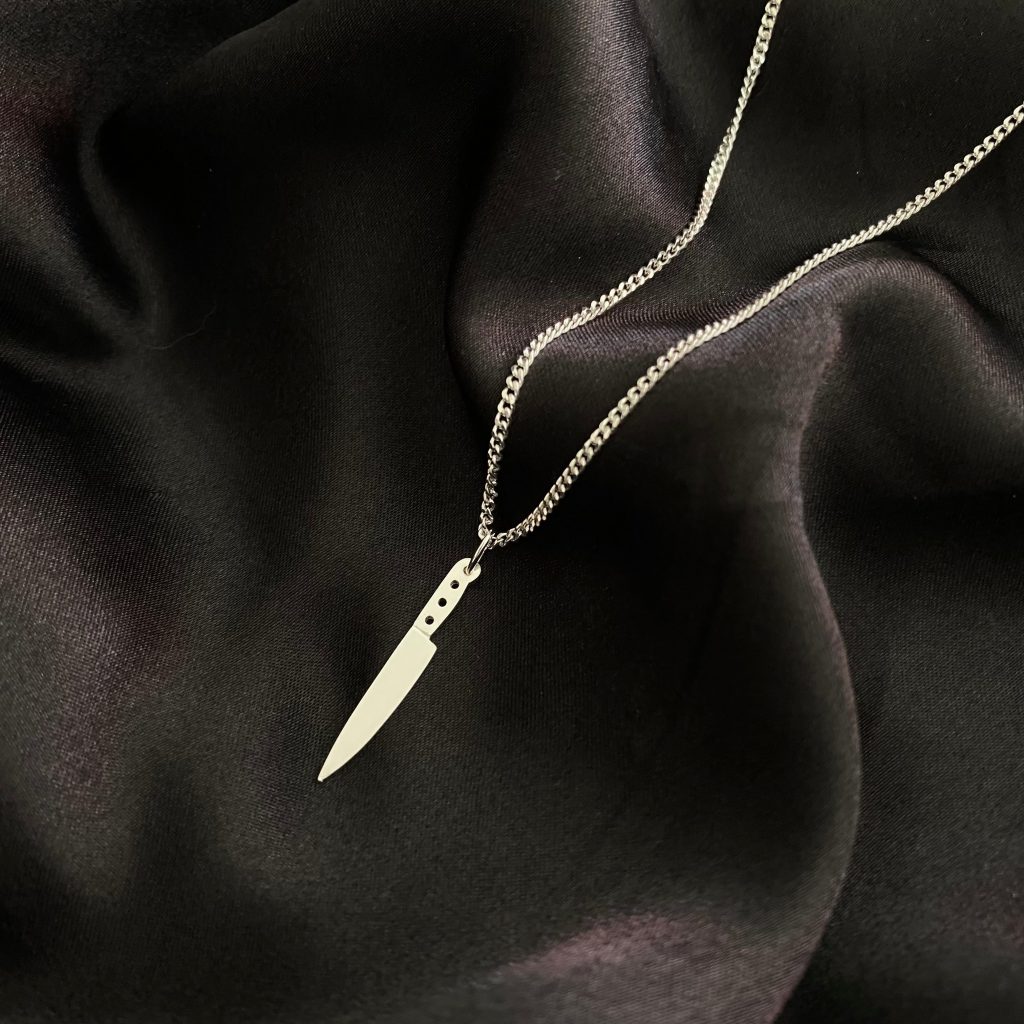
Ancient Roots and Cultural Significance
- Cultural Symbols of Power and Protection: In many ancient societies, knives represented strength and were associated with warriors, hunters, and protectors. For instance, the Vikings wore seax knives as pendants, symbolizing their prowess in battle and readiness to defend their communities. Similarly, certain African tribes crafted intricate knife pendants from precious metals or bone, bestowing them upon esteemed warriors as marks of honor and status.
- Ritual and Spiritual Significance: Beyond martial contexts, knife necklaces held spiritual importance. In some Native American cultures, small knives were incorporated into medicine bags and worn around the neck for protection against evil spirits or to切割 through spiritual barriers during rituals. Likewise, in parts of Asia, knives were believed to ward off bad luck and illness when worn close to the heart.
- Craftsmanship and Artistry: Knife necklaces also showcased the skill and artistry of their makers. From the elaborate damascus steel blades of the Middle East to the delicately carved jade knives of ancient China, these pieces often reflected the highest level of metallurgy and gemstone carving, making them prized possessions and heirlooms.
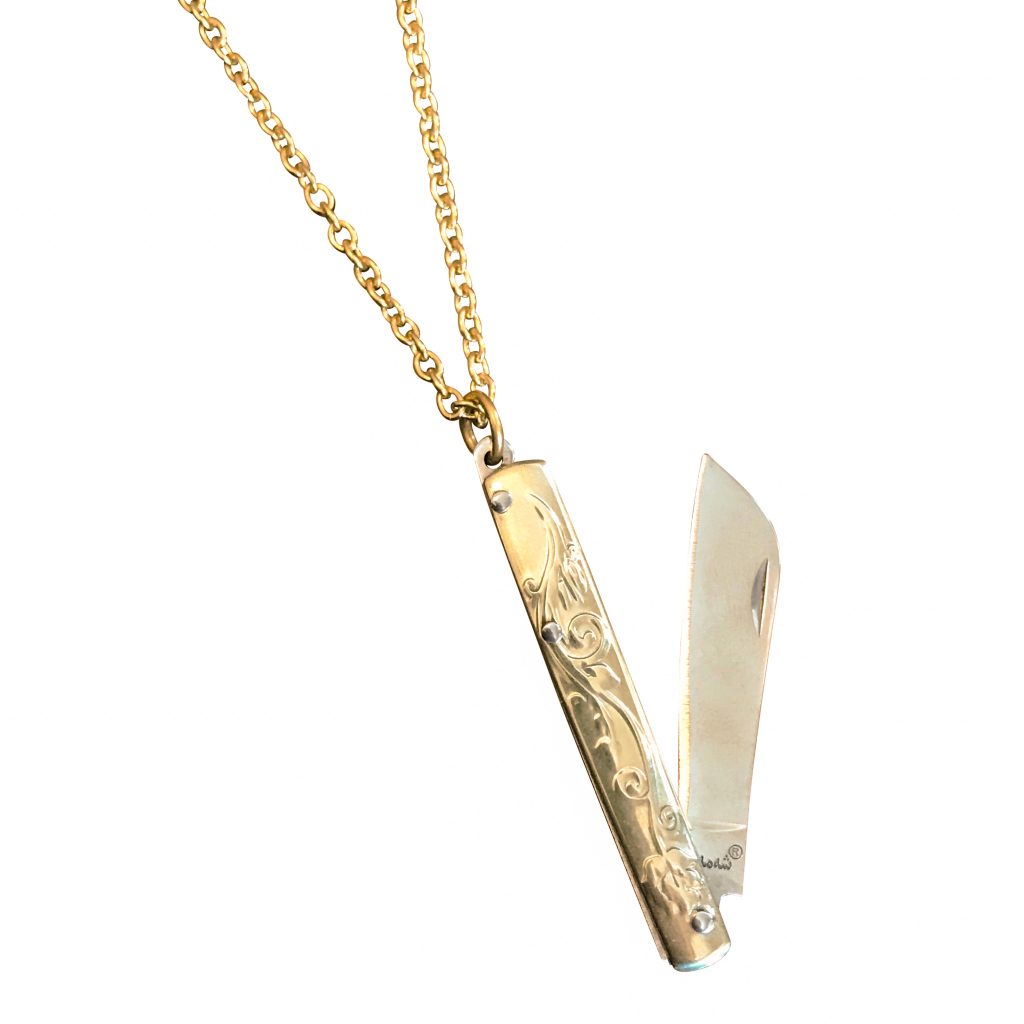
The Artisan’s Touch
At the heart of every handmade knife necklace lies the artisan’s meticulous attention to detail. Unlike mass-produced alternatives, these pieces are meticulously crafted by skilled hands, often using techniques passed down through generations. From selecting the finest materials such as high-carbon steel for durability and edge retention, to hand-forging the blade to its perfect shape, each step is a testament to the maker’s dedication to their craft. Handles may be adorned with rare woods, polished bone, or even intricate patterns carved into metal, ensuring that each piece is truly one-of-a-kind.
Designs That Speak to the Soul
Modern knife necklace designs cater to a wide range of tastes, from minimalist elegance to bold, statement pieces. For the urban adventurer, sleek and compact designs offer a subtle yet powerful expression of preparedness. These often feature clean lines, minimalist handles, and compact blades that blend seamlessly into everyday wear. On the other hand, those drawn to a more rustic charm can opt for designs inspired by historical knives, complete with ornate hilts, etched patterns, and even gemstone inlays, reflecting a deep appreciation for heritage and folklore.
Functional Fashion
Beyond their aesthetic appeal, handmade knife necklaces serve a practical purpose for the modern adventurer. Compact enough to wear discreetly yet always within reach, they can be invaluable tools for camping, hiking, or survival situations. Whether used for opening packages, cutting cordage, or even self-defense, these wearable knives embody the ethos of being prepared for whatever life throws at you. Moreover, the necklace design ensures that the knife is always secure and accessible, eliminating the risk of misplacing it during outdoor pursuits.
Sustainability and Ethical Sourcing
As consumers become increasingly conscious of the environmental impact of their purchases. Many artisans are turning to sustainable materials and ethical sourcing practices. Recycled metals, reclaimed wood. And responsibly harvested natural materials not only minimize the ecological footprint but also add a layer of storytelling to each piece. Choosing a handmade knife necklace made from such materials allows the wearer to make a statement about their values while embracing their adventurous spirit.
A Symbol of Identity
Ultimately, wearing a handmade knife necklace is a declaration of one’s character—a tangible manifestation of a bold, self-reliant, and adventurous spirit. It speaks to a person’s love for craftsmanship, respect for tradition. And a desire to stand out in a world of mass-produced commodities. Each time the necklace catches the eye, it sparks conversations. Revealing glimpses into the wearer’s experiences, values, and the stories behind their chosen piece.
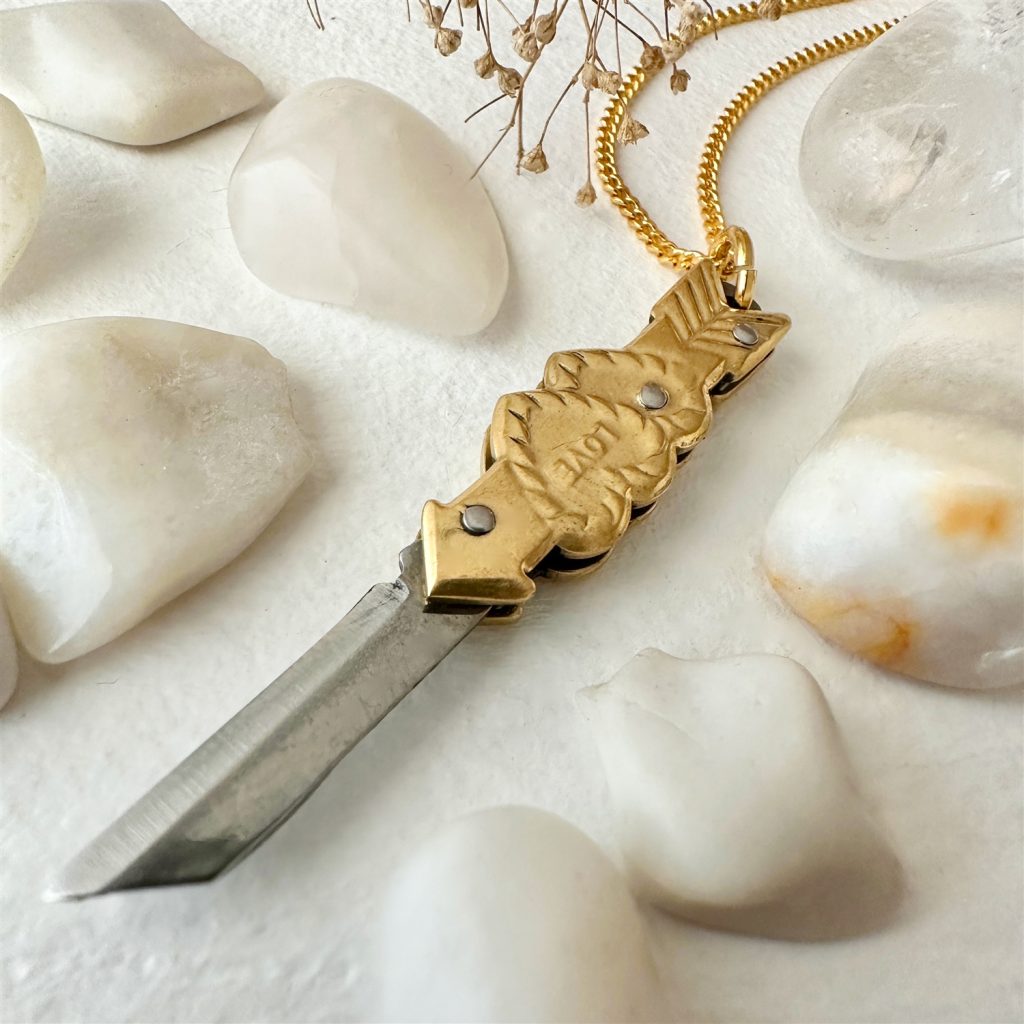
Transition to Fashion and Modern Interpretations
- Punk and Counterculture: In more recent times, knife necklaces gained popularity within subcultures, especially punk and goth scenes of the 1970s and 80s. Here, they served as emblems of rebellion, non-conformity, and a fascination with the macabre. Often made from leather, silver, or studded materials, these accessories became an integral part of the punk aesthetic.
- Mainstream Fashion Adoption: As with many subcultural trends, knife necklaces eventually found their way into mainstream fashion. Designers began incorporating miniature knives into their jewelry lines, transforming once utilitarian items into chic and sophisticated statement pieces. Materials such as gold, rose gold, and even Swarovski crystals replaced traditional metals. Catering to a broader audience seeking unique yet elegant accessories.
- Personal Expression and Identity: Today, knife necklaces hold a special place in personal expression, representing individuality, strength. Or even a connection to one’s heritage. They serve as conversation starters. Allowing wearers to express their fascination with history, culture, or simply their love for edgy, unconventional accessories.
Contemporary Ethical Considerations
With the rise in popularity, it is crucial to address the ethical implications of wearing knife necklaces. While they may be seen as purely symbolic in modern times. It is essential to respect the cultural origins of such items and avoid appropriating sacred symbols. Additionally, considerations about safety and sensitivity in public spaces should be taken into account. Ensuring that these accessories are not misconstrued as threatening.
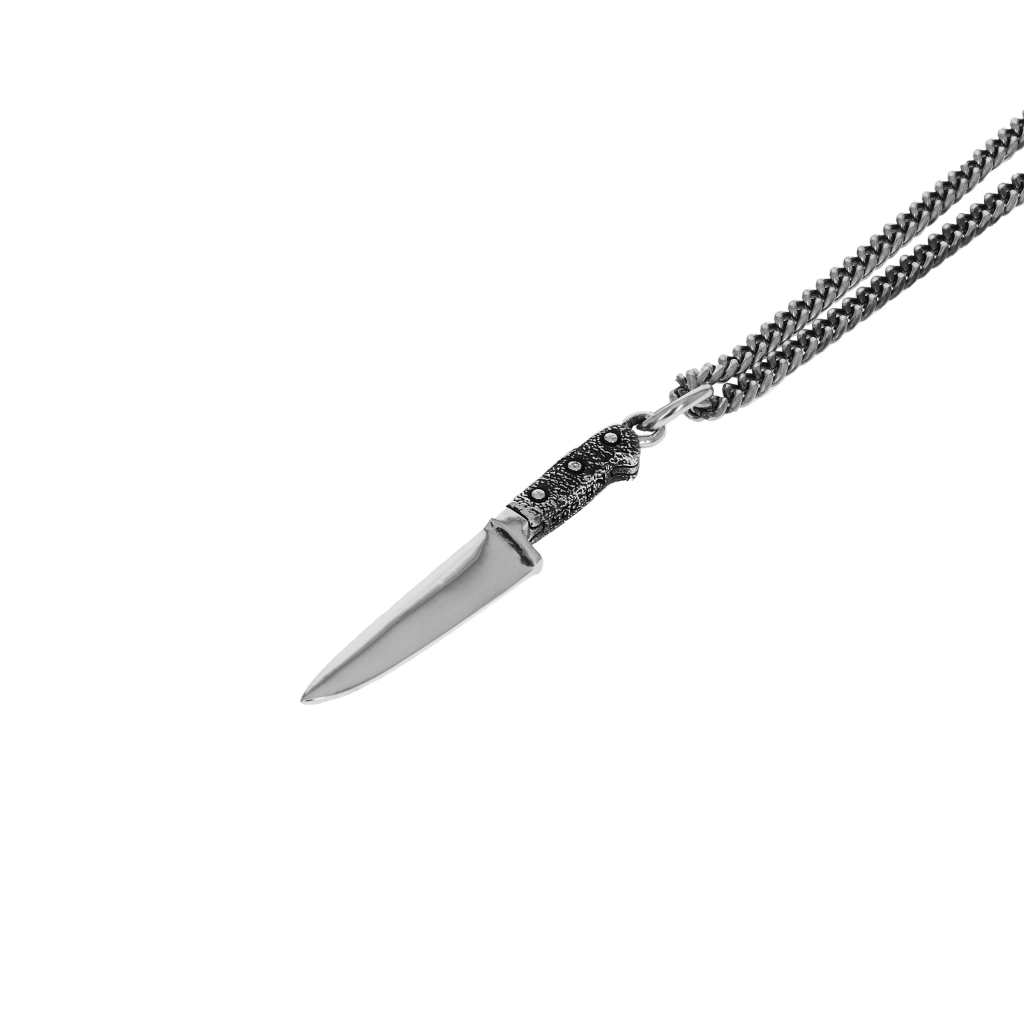
Conclusion
The rise of knife pendant necklaces in fashion signifies more than just a fleeting trend. It represents a cultural shift towards embracing the complexities of human nature and celebrating individuality. As fashion continues to push boundaries. This edgy yet elegant accessory stands as a testament to the power of recontextualization and the enduring allure of symbolism in self-expression. Whether worn as a talisman, a statement of defiance. Or simply an appreciation for its aesthetic, the knife pendant necklace has carved out a unique space in the world of fashion.
